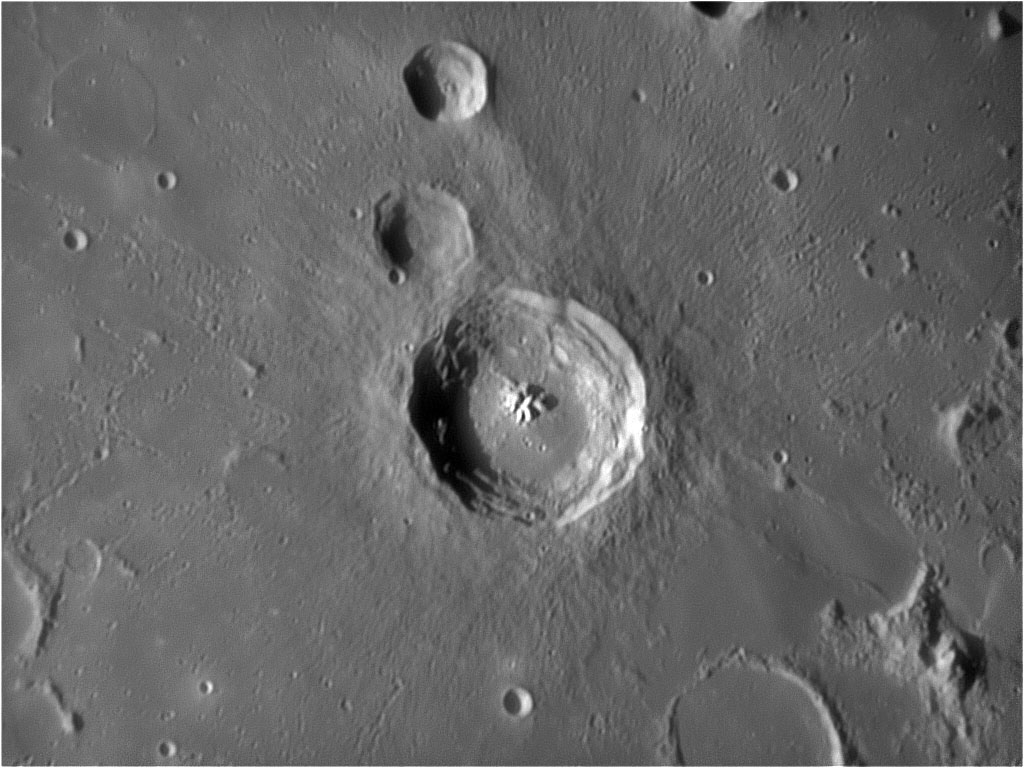|
|||||||
|
Bullialdus is a lunar impact crater located in the western part of the Mare Imbrium. To the north by north-west is the broken-rimmed and lava-flooded Lubiniezky crater. South-west of Bullialdus lies the smaller König crater. The relatively isolated location of this crater serves to highlight its well-formed shape. Bullialdus has a high outer rim that is circular but observers have noted a slightly polygonal appearance. The inner walls are terraced and contain many signs of landslips. The outer ramparts are covered in a wide ejecta blanket that highlights a radial pattern of low ridges and valleys. In the center of the crater is a formation of several peaks and rises that climb to over a kilometer in height. A raised ridge runs from the peaks to the south-east, until finally merging with the inner wall. The floor of the crater is generally rough with many low rises. Overall it has a somewhat convex shape, bulging upward toward the middle. When the sun is at a high angle, the rim and central mountains appear brighter than the surroundings, and white patches can be viewed on the crater floor. Two smaller but notable craters lie just to the south of the main crater. 'Bullialdus A' lies just to the south-west of Bullialdus, within its ramparts. To the south of 'Bullialdus A' is the slightly smaller 'Bullialdus B'. |
|||||||



